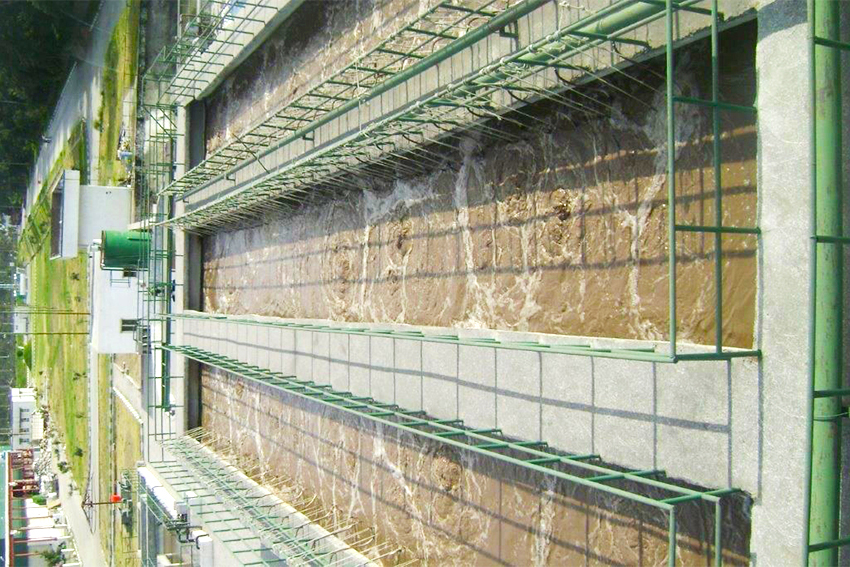Introduction
Moving Bed Bio Reactor (MBBR) technology is revolutionizing the way industries and municipalities treat wastewater. By combining the benefits of activated sludge and biofilm processes, MBBR systems offer highly efficient, compact, and low-maintenance solutions for sewage treatment plants (STP) and effluent treatment plants (ETP).
What is a Moving Bed Bio Reactor (MBBR)?
An MBBR system is an advanced biological wastewater treatment process that uses specially designed carrier media within aeration tanks. These media provide a large surface area for biofilm growth, where microorganisms break down organic pollutants efficiently. Unlike traditional methods, MBBR does not require sludge recycling, resulting in a simpler, more reliable system with reduced operational complexity.
MBBR technology is widely used in industries like pharmaceuticals, textiles, food & beverage, chemical manufacturing, and municipal wastewater management.
How Does MBBR Technology Work?
The MBBR wastewater treatment process consists of:
1. Carrier Media
Plastic bio-media float freely in the aeration tank, providing a home for biomass growth.
2. Aeration System
Air is pumped through diffusers to keep the carriers in constant motion and supply oxygen for aerobic microorganisms.
3. Biological Degradation
Organic matter is consumed by microorganisms attached to the carrier surface, significantly reducing BOD, COD, and nutrient levels.
4. Final Clarification
Treated water flows to a clarifier where remaining solids are settled out, producing high-quality effluent suitable for discharge or reuse.
Advantages of MBBR Systems
- Compact Design:Requires less space compared to traditional biological systems.
- High Treatment Efficiency:Removes up to 90–95% of organic load.
- Low Sludge Production:Reduces sludge handling and disposal costs.
- Flexible and Scalable: Easy to expand capacity by adding more carriers.
- Stable Operation:Resilient to load variations and shock loads.
- Energy Efficient:Optimized aeration reduces power consumption.

Applications of MBBR Technology
- Municipal Sewage Treatment Plants (STP)
- Industrial Effluent Treatment Plants (ETP)
- Upgradation of Existing Plants
- Decentralized Sewage Treatment Systems
- Greywater Recycling Systems
At SDES, we customize MBBR systems based on influent characteristics, flow rates, and specific industry requirements to deliver maximum treatment efficiency.
Key Components of an MBBR Plant
- MBBR Carrier Media: Specially engineered media for maximum surface area.
- Aeration Tank: Maintains optimum dissolved oxygen levels.
- Air Diffusers: Ensure uniform air distribution.
- Screening and Clarification Units: Remove non-biodegradable solids and sludge.
- Control Panel and Instrumentation: Monitor critical parameters like DO, pH, and MLSS.
➡️ Learn more about our Effluent Treatment Plant (ETP) Solutions
Why Choose SDES for Your MBBR System?
Customized Design Based on Influent Study
- High-Quality MBBR Media Supply
- Energy-Efficient Aeration Systems
- Complete Installation and Commissioning
- AMC and O&M Services Available
- Compliance with CPCB, SPCB, and MOEF guidelines
We ensure seamless integration of MBBR technology with new or existing wastewater treatment facilities for enhanced performance and regulatory compliance.
Internal Links
- Effluent Treatment Plant (ETP)
- Sewage Treatment Plant (STP)
- Operation & Maintenance Services
- Pressure Sand & Activated Carbon Filters
Conclusion
Investing in an MBBR wastewater treatment system is a smart choice for industries and municipalities seeking compact, reliable, and cost-effective wastewater management solutions. At SDES, our expert team designs and delivers MBBR systems that consistently meet your performance, environmental, and sustainability goals.
Looking for the best MBBR solution?
➡️ Contact SDES Today for a Consultation